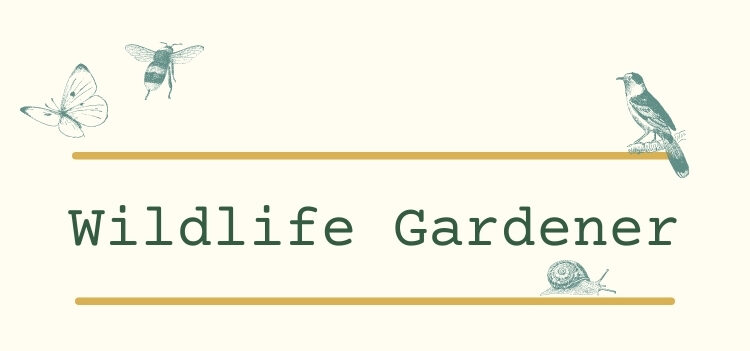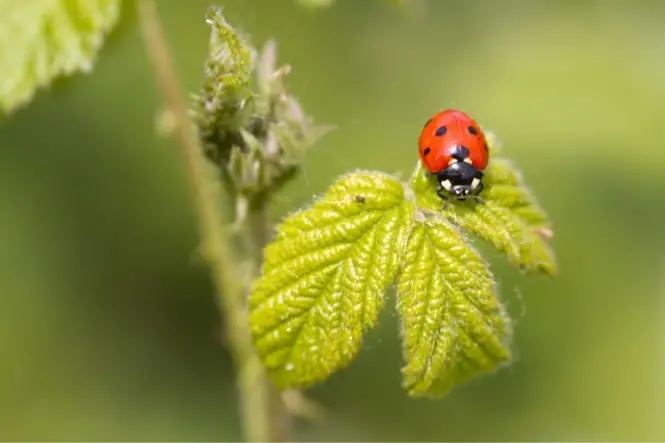You’ve taken all the trouble to build a wildlife garden to be proud of – so you’re hardly going to want to risk spoiling it by dousing everywhere with pesticides at the first sign of trouble, however hungry those creepy-crawlies seem to be!
Like innumerable other wildlife gardeners, you decided right from the start that you’re going to make sure this little patch of the world stays chemical-free, but how ready are you to keep all those pests under control without being forced to reach for a spot of insecticide?
Not sure? Well, here’s a quick quiz to help you find out. The answers are at the bottom, so good luck and have fun!
1. First things first – what does natural pest control mean to you?
- a) It’s using nature to police the garden.
- b) It’s using a pest’s natural enemies to control it.
- c) It’s only using naturally occurring treatments – no pesticides.
2. We all know ladybirds are good friends to have around the garden – but why ?
- a) They eat slugs.
- b) They eat aphids.
- c) They eat lacewings.
3. Which of these unlikely candidates helps to control slugs?
- a) The Devil’s Coach-horse
- b) The Death’s Head Moth
- c) The Destroying Angel Fungus
4. Why is the Tansy or Pyrethrum Daisy a useful plant to grow?
- a) Aphids love it – so they leave everything else alone.
- b) It produces a natural insecticide and so protects nearby plants.
- c) It is a carnivorous plant and catches insects just like a Venus Fly trap.
5. Fresh mint is said to be a deterrent for a common kind of pest; is it:
- a) Mice?
- b) Ants?
- c) Vine Weevils?
6. Phasmarhabditis hermaphrodita is a nematode worm used as biological control for a common garden pest – but which one?
- a) Caterpillars
- b) Greenfly
- c) Slugs
7. Beer, crushed egg shells, copper rings and sharp sand – what are we trying to keep away ?
- a) Slugs and snails
- b) Woodlice and earwigs
- c) Wireworms and vine weevils
8. Plants of the Allium family can be useful for pest control – but which of these are Alliums?
- a) Potatoes, tomatoes and deadly nightshade.
- b) Onions, chives and garlic.
- c) Pyrethrum, marguerite and daisy.
9. Which “gardener’s friend” has an anvil and why is it helpful ?
- a) A ladybird – it’s the structure on its head that helps it locate greenfly.
- b) A hedgehog – it’s the stone it uses to sharpen its claws.
- c) A thrush – it’s the stone it uses to smash snails shells against.
10. If you’ve had a bad case of potato cyst eelworms, how long before you can safely plant potatoes again?
- a) 6 days
- b) 6 months
- c) 6 years
Answers.
1. It’s any of these and all of them – so one point for answering (a), (b) or (c) and give yourself a bonus point if you spotted this for the sneaky question it is!
2. It’s (b); both adult and larval ladybirds eat huge numbers of aphids.
3. Answer (a). The Devil’s Coach-horse (also called the Devil’s Coachman or Footman) is a carnivorous predatory beetle that eats a range of invertebrates including slugs.
4. It’s (b) – the pyrethrum plant produces its own natural insecticide.
5. A few sprigs of fresh mint inside your cupboards or wrapped around any garden bulbs you’re storing is supposed to keep the mice away, so it’s (a).
6. Answer (c); this nematode is very specific and it only affects slugs.
7. Answer (a) – slugs and snails, though the beer trap idea might just work for some of the others too!
8. It’s (b), onions, chives and garlic. Garlic oil is a favourite with organic gardeners, while all three are said to be very useful when grown alongside other plants, keeping aphids and other pest species away.
9. Thrushes smash snail shells against an anvil stone to get at the soft bodies inside, so the answer’s (c).
10. Amazingly, it’s (c). In a really bad case of eelworms, you should leave the affected patch of ground potato-free for six or even seven years just to be sure there’s no more risk. Persistent little blighters, aren’t they?
So, how did you do?
- 11, No flies on you!
- 7 – 10, Keeping pests at bay!
- 3 – 6, Looking a little nibbled!
- 0 – 2, Oh, rats!

